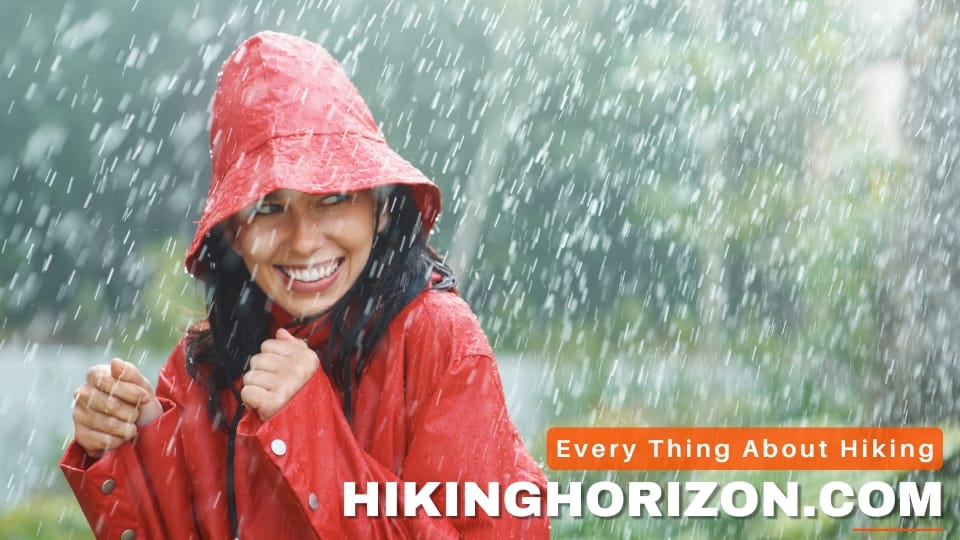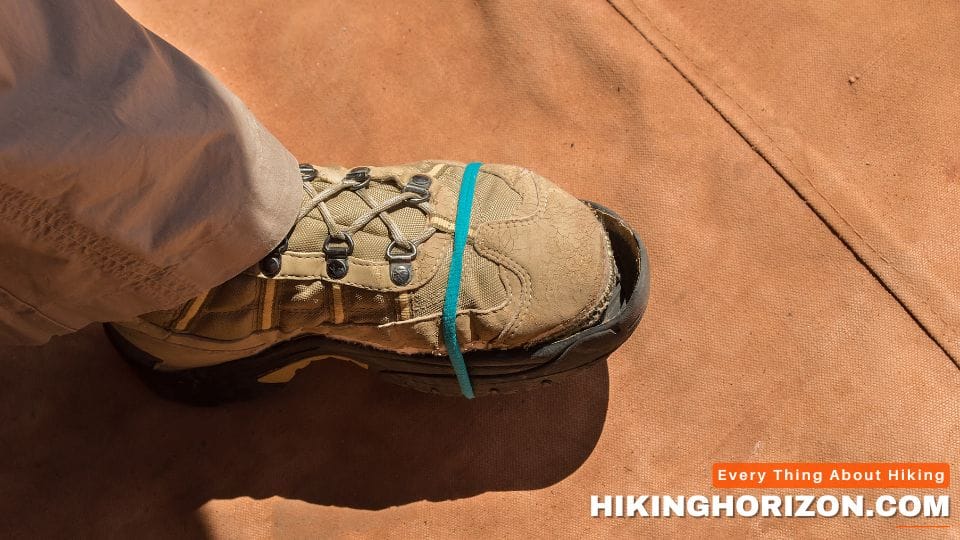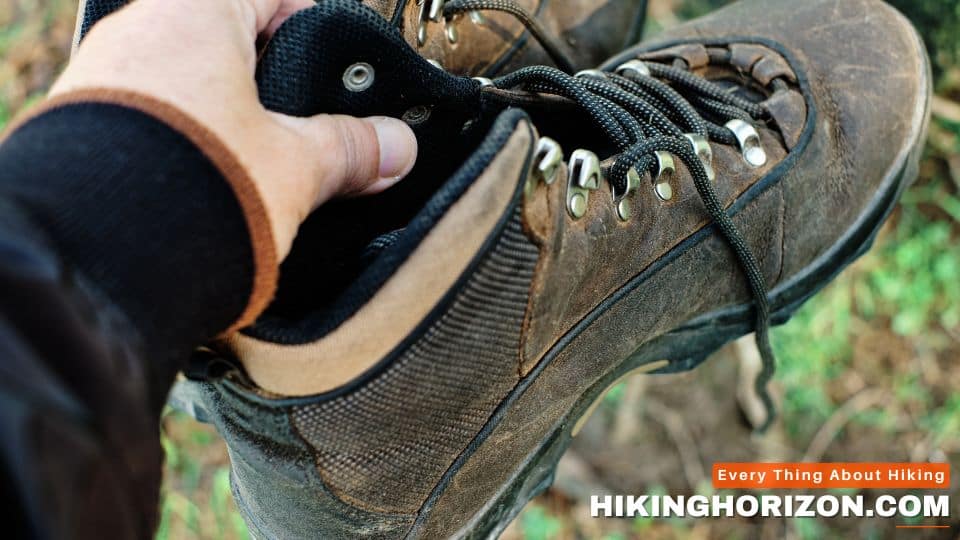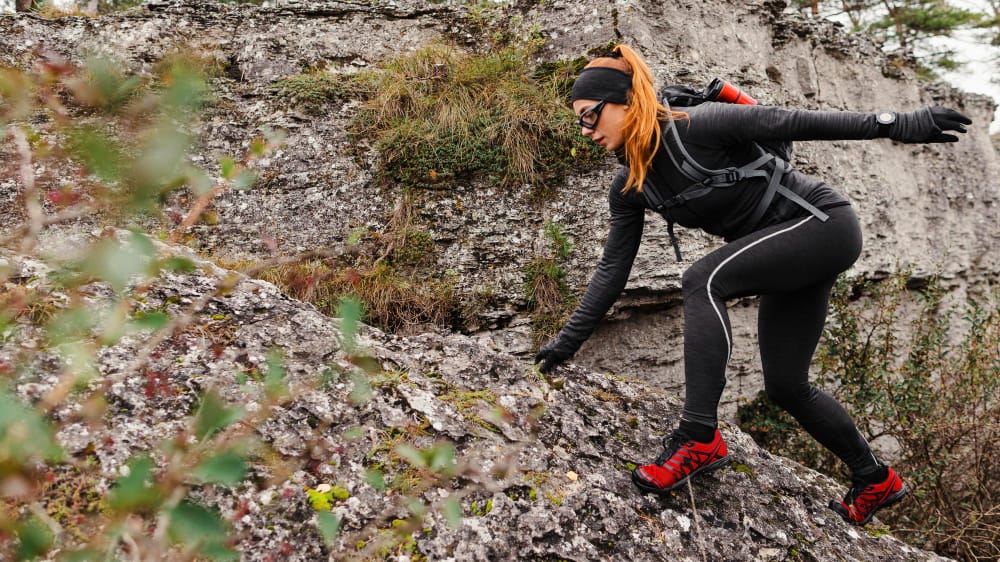
Hiking in the rain can be an exhilarating experience. The sound of raindrops hitting the trees, the mist in the air, and the solitude of having the trail to yourself all make for a magical hike. However, rain also makes the trail more challenging. Slippery conditions, hypothermia, and flash flooding are all real dangers when hiking in wet weather.
So, is hiking in the rain safe? With the proper precautions, gear, and mindset, hiking in light to moderate rain can be perfectly safe. And while intense downpours, thunderstorms, and very muddy trails should be avoided, there are still ways to have an amazing time on the trail—rain or shine.
In this complete guide, you’ll learn:
- How to evaluate if conditions are safe for hiking in the rain
- What clothing and gear will keep you dry on a rainy hike
- Tips for traction and safety when trails are slippery
- What to pack for comfort and safety in wet weather
- How to care for your gear after hiking in the rain
- When it’s better to postpone your hike until the rain stops
Equipped with this advice, you can confidently gear up and hit the trails even when the skies are gray. A little rain doesn’t have to stop you from enjoying the beauty of nature and getting in a great hike!
Table of Contents
When Is hiking safe in the rain?
Before heading out into the rain, it’s important to assess the conditions and decide if it’s actually safe to hike that day. Here are some factors to consider:
Intensity of the Rainfall
Light to moderate rainfall is generally fine for hiking. But intense downpours can create dangerous conditions like flash floods, landslides, and very slippery trails. Constant heavy rain can also lower visibility on the trail and make it hard to follow the route.
For safety, it’s best to postpone your hike if rainfall is extremely heavy.
Risk of Thunderstorms
Thunderstorms with lightning strikes can be deadly, so hiking should always be avoided if these storms are predicted. Check the weather forecast before heading out. Even if the weather seems fine at the start of your hike, rapidly developing thunderstorms are common in many areas during rainy season. Be ready to turn back if you hear thunder.
Trail Conditions
Trails that become extremely muddy and flooded with standing water are hazardous for hiking. Deep mud makes trails slippery and can cause you to lose your footing. Large puddles can also hide obstacles underneath like rocks or branches that could trip you up.
Choose trails that drain well and aren’t too susceptible to flooding if you’ll be hiking in the rain. Avoid canyons or low-lying areas that are prone to flash floods during heavy rainfall.
Forecast After the Rain
Sometimes the window right after rain stops can be the ideal time to hike if the forecast looks clear. Trails will still be wet and muddy, but you won’t have to hike in active rainfall.
Just be sure storms aren’t predicted to start again soon. And give trails time to drain if it’s been raining heavily for multiple days in a row.
When it is not safe to hike in the rain?

In certain conditions, hiking in the rain goes from challenging but doable to legitimately risky. As much as we all love being out on the trails, safety has to come first. If you encounter certain red flags, it’s best to avoid caution and postpone your hike for another day.
- Avoid hiking when flash flood warnings are in effect for the area
- Do not hike if intense thunderstorms with lightning are predicted
- Postpone your hike if trails and paths are flooded or rivers are overflowing banks
- Turn around if sections of the trail become raging streams or have deep standing water
- If heavy downpours reduce visibility to dangerous levels, do not proceed
- Muddy trails that give way under your feet and have caused you to slip multiple times are too hazardous to hike
- If hypothermia from wet clothes and exposure becomes a real risk, play it safe and head back
- Don’t hike into remote areas when extremely heavy rainfall is forecasted
- Use good judgment based on weather forecasts to avoid dangerous situations
- Trust your instincts – don’t second guess concerns about flash flooding or other risks
- Avoid hiking alone when severe weather is predicted
- If you question your skills to hike safely in stormy conditions, wait for a better weather window
- Lightning storms and slippery trails leading to injuries make hiking risky
- Prioritize safety by postponing hikes in clearly dangerous conditions
"There's something magical about hiking in the rain. The cool air and the soothing sound of raindrops make me feel more connected to nature."
Jennifer Pharr Davis, record-setting long-distance hiker.
How to stay dry on a rainy day hike ─ Choose Rain Gear
Having waterproof, breathable rain gear is essential for staying dry and comfortable on the trail during showers. Here are some key tips for choosing effective hiking rain gear:
Rain Jackets and Pants
A waterproof rain jacket and rain pants are must-have gear for rainy hikes. They’ll keep your core and legs dry. Look for ones made of waterproof, breathable fabrics like Gore-Tex that won’t trap sweat inside.
Waterproof Hiking Shoes
Waterproof hiking boots or trail shoes with good traction prevent your feet from getting soaked and slipping on slick trails. Wear high ankle shoes to keep water out and choose shoes with aggressive tread that will grip muddy trails.
Waterproof Pack Covers
Keep the contents of your backpack dry with a waterproof pack cover designed for hiking. Make sure to cinch it down tightly over openings. Lightweight pack liners are another option that go inside your pack.
Wool Socks
Wool hiking socks will keep your feet warm if water does get inside your shoes. Wool stays insulating when wet. Bring extra dry socks to change into during long hikes.
Waterproof Gloves
For colder weather hikes, wear waterproof gloves to keep your hands dry and warm. Look for breathable styles that allow moisture to escape.
Tips for Staying Safe on a rainy hike
Rain makes trails slippery, muddy, and much harder to hike safely. Use these tips to stay surefooted when the path is wet:
- Choose hiking shoes or boots with deep, aggressive tread that will grip muddy trails
- Consider using trekking poles—the extra stability really helps in slippery conditions
- Take a slow, steady pace on descents or sections with mud or puddles
- Step on rocks and roots whenever possible to avoid sinking into mud
- Be ready to course correct if your feet start to slip—don’t fight it
- Keep eyes on the trail to spot puddles or muddy patches early
- Let other hikers know you’re behind them before passing so they can make room on a firm trail
- Avoid stepping on wet logs, fallen leaves, moss, or grass next to trails
Planning your route carefully and being even more cautious than usual is key. It’s better to slow down and pay close attention when traction is poor.
reasons why hiking in the rain can be fun
| Reason | Description |
|---|---|
| Refreshing and Invigorating Atmosphere | The cooler temperatures and fresh, humid air create a pleasant and refreshing hike environment. The rain helps filter the air and provide cleaner breathing. |
| Embracing the Sounds of Nature | The sound of raindrops on leaves and the forest floor creates a calming, meditative atmosphere. Rain brings out sounds of wildlife not heard on dry days. |
| Fewer Crowds | Rain deters many casual hikers, leaving trails quieter and more peaceful. You can better experience solitude and see more wildlife. |
| Physical and Mental Challenge | Wet, slippery trails demand greater focus, balance, and coordination. It provides a rewarding physical and mental challenge. |
| Vibrant, Lush Scenery | Raindrops on leaves sparkle and make the landscape appear more vibrant and colorful. New waterfalls and streams appear. |
| Unique Photography Opportunities | Soft, diffused light creates dramatic, moody photos. Rain adds texture and sheen to the scenery. |
| Appreciation for Dry Weather | Overcoming the challenges of rain gives you a new appreciation for dry conditions and sunny days. |
Is Hiking In The Rain Safe? What Expert Hikers Say
1. Bear Grylls
Bear Grylls, a British adventurer, writer, and television presenter, is widely known for his love of the great outdoors. Having served in the British Special Forces, Grylls’ survival skills are legendary. He enjoys hiking in all weather conditions, including rain.
“There’s something about hiking in the rain that’s both invigorating and calming. It reminds you that nature is powerful, but also that it’s there to be embraced.”
2. Jennifer Pharr Davis
Jennifer Pharr Davis is an accomplished long-distance hiker with set Appalachian and Pacific Crest Trails records. As a motivational speaker, author, and founder of Blue Ridge Hiking Company, she’s passionate about inspiring others to embrace the outdoors.
“Hiking in the rain may be challenging, but it’s also an opportunity to connect with nature in a raw and authentic way. It’s a reminder that we’re a part of something much bigger than ourselves.”
3. Andrew Skurka
Andrew Skurka is an American long-distance hiker known for his impressive solo hikes across thousands of miles of wilderness. His expertise has made him an accomplished guide, author, and public speaker.
“When you hike in the rain, you’re truly experiencing the elements, and there’s something incredibly grounding about that. It’s an opportunity to challenge yourself and appreciate the beauty of the world around you.”
4. Cheryl Strayed
Cheryl Strayed is an American author and long-distance hiker best known for her memoir “Wild: From Lost to Found on the Pacific Crest Trail.” Strayed’s journey of self-discovery and healing, during which she embraced the challenges of hiking in various weather conditions, has inspired countless others.
“Hiking in the rain can be a deeply moving experience. The sound of raindrops hitting leaves and the feeling of water on your skin brings you closer to nature and offers a unique perspective on the world.”
5. Aron Ralston
Aron Ralston is an American outdoorsman, engineer, and motivational speaker. He gained international fame after being forced to amputate his arm to escape a hiking accident in 2003. Despite his challenges, Ralston remains passionate about the outdoors and continues to hike, often in rainy conditions.
“Rain or shine, hiking is a celebration of life and the beauty of nature. When you’re out there in the rain, you’re reminded of the power and resilience of the human spirit.”
What to Pack for hiking in wet conditions

Having the right gear and supplies along is vital for both safety and comfort when hiking in wet conditions. Here are some essential items to pack:
- Waterproof rain jacket and pants – Keep your base layers and hiking clothes dry underneath
- Waterproof hiking shoes – Prevent soggy feet and slip ups
- Wool socks – Stay warm in case water gets in shoes
- Waterproof pack cover or liner – Protect food, electronics, etc. inside pack
- Trekking poles – Help stabilize yourself on muddy trails
- Plastic bags – Store wet gear or extra dry socks
- Waterproof gloves – Keep hands warm and improve grip
- Rain cover for your hat – Keeps rain out of eyes
- High protein, high calorie snacks – Help maintain energy in cold weather
- Waterproof matches – Emergency fires will be difficult
- Water filtration – Don’t rely on streams and springs in heavy rain
- First aid kit – Be prepared for potential slips
- Navigation – Maps, compass, GPS in case low visibility occurs
- Emergency blanket – Prevent hypothermia if injured far from shelter
- Headlamp – Light your way if it gets dark early due to clouds
Take time when packing for a rainy hike to make sure you have all essentials—once you’re out on the trail, it’s too late!
6 potential risks of hiking in the rain
| Risk | Description |
|---|---|
| Slippery and Uneven Terrain | Rainwater makes rocks, tree roots, and other surfaces very slippery, increasing chances of falls and injuries. |
| Hypothermia | Wet clothing and cold temperatures can cause body temperature to drop rapidly, leading to hypothermia. |
| Lightning Strikes | Rainstorms bring the danger of lightning strikes which can be fatal for hikers caught in the open. |
| Reduced Visibility | Heavy rain obscures the trail and makes seeing hazards much harder. |
| Flash Floods | Heavy rain can cause sudden and dangerous flash flooding, especially near streams and rivers. |
| Wildlife Encounters | The rain brings out more active wildlife which needs to be respected and given space. |
Is it Worth Hiking After Rain?

Hiking after rain can be completely worth it, as long as you prepare properly and choose the right timing. Planning to hike in the period immediately after rainfall stops can give you the benefits of wet weather beauty, without actually having to hike in the rain.
Trails are likely to still be muddy and damp after rain, so waterproof boots and poles for stability are must-haves in post-rain conditions. You’ll also want quick-drying, water-wicking layers in case you brush against wet plants or step in puddles. But you can travel relatively lightly without the need for full head-to-toe rain suits. And with storms passed, you can enjoy misty fog in the treetops, waterfalls churning with new vigor, and a peaceful solitude on the trails.
Just be cautious of slick rocks, muddy patches, and branches that may have fallen during storms. As long as flash flooding risk has abated, trails have had a chance to drain a bit, and no new storms loom on the horizon, hitting the trailhead right after rainfall stops can let you see the forest under beautifully lush conditions after its nourishing drink of water. The sounds of drips falling from leaf-tips and cleaner air can be magical. Just focus on footing, watch post-storm skies carefully, and time it right.
10 hiking safety tips for rainy conditions
| Safety Tip | Description |
|---|---|
| Check the weather forecast | Know expected conditions to prepare properly and avoid dangerous storms. |
| Wear appropriate clothing and footwear | Waterproof jackets, pants, and hiking boots provide protection from the elements. |
| Bring extra layers | Pack spare warm and dry clothing in case of emergencies or temperature drops. |
| Protect your gear | Use waterproof bags and covers to keep equipment dry. |
| Stay on the trail | Avoid taking shortcuts or going off-trail where injury risk is higher. |
| Use trekking poles | Poles improve stability and prevent falls on slippery terrain. |
| Stay hydrated | Drink plenty of water even if you don’t feel thirsty. |
| Take breaks | Rest and recharge frequently, assess conditions. |
| Hike with a partner | Hiking with others provides safety and support. |
| Know your limits | Don’t push beyond your abilities, turn back if needed. |
Caring for Gear After Hiking in the Rain
Soaked gear needs proper care once home to prevent damage, odor, and mold. Here are some tips:
- Dry wet gear completely – Hang jackets, use boot dryers, and stuff shoes with newspaper
- Wash muddy clothes – Use a gentle cycle and avoid heat to prevent shrinkage
- Stuff backpacks with newspaper – Absorbs moisture and retains shape
- Air out gear in sunlight – The UV helps kill bacteria causing odors
- Treat leather boots – Use oils or sprays to condition and waterproof
- Check electronics – Dry out phone, batteries, GPS to prevent corrosion
- Replace food – Discard anything opened that got wet
- Dry tent before storing – Prevent mildew smell
Taking the time to properly dry and care for your hiking gear after heavy use in the rain will extend its life significantly. And make sure everything is completely dry before your next outdoor adventure!
When to Call Off a Hike Due to Wet Weather
As much as we all love hiking, sometimes it’s safer to postpone the trip when conditions take a turn for the worse. Here are some signs it’s better to call it a day rather than push on:
- Steady downpour with intense rainfall
- Visibility drops sharply due to heavy fog
- You hear rumbles of thunder in the distance
- Small creeks along the trail are flooding over banks
- Sections of the trail are completely underwater
- You’re unable to find safe footing around muddy spots
- Hypothermia is becoming a real risk as clothes get soaked
Listen to your intuition—if the weather is making you genuinely worried for your safety, turn around and hike out. There will be clearer days ahead to enjoy the trails!
Are waterproof hiking pants necessary in the rain?
Waterproof hiking pants are not an absolute necessity for hiking in the rain, but they can make a big difference in keeping you dry and comfortable if conditions are very wet. Light rain pants that pack down small are a recommended item to bring just in case. Especially if you’re hiking in the mountains where storms can blow in unexpectedly or planning a long hike where gear getting wet becomes more problematic.
If there is only a light drizzle or occasional short shower, then wearing quick-dry hiking pants and waterproof boots may be enough to keep you reasonably dry and warm. But in steady rain or during extended downpours, having waterproof rain pants to put on can help keep your legs and gear dry underneath. Wearing waterproof shoes and rain pants together will keep you drier compared to just relying on waterproof shoes alone.
essential hiking gear for hiking in rain
| Gear | Description |
|---|---|
| Waterproof jacket and pants | Outer layers made of waterproof material like Gore-Tex keep you dry. |
| Waterproof hiking boots | Boots with waterproof linings prevent wet feet. Good tread provides traction. |
| Waterproof backpack cover | Protects pack and gear from getting wet. |
| Trekking poles | Provide stability on slippery terrain. |
| Quick-dry clothing | Wicks moisture, prevents chafing. Made from synthetic/wool. |
| Dry bags | Protect electronics and valuables from water damage. |
| Emergency shelter | Lightweight tarp or bivy sack for emergencies. |
| Extra layers | Stay warm and dry with extra wool/synthetic layers. |
| Headlamp/flashlight | Illuminates trail in low visibility. Waterproof. |
| First aid kit | Treat injuries. Include necessities like bandages. |
| Map/compass/GPS | Navigate when visibility is poor. Waterproof. |
Staying Safe and Comfortable Hiking in the Rain
If you prepare properly and exercise good judgment, hiking in the rain can be safe, fun, and memorable. Follow these tips to stay dry, comfortable, and ready for the challenges of the trail during showers:
- Wear waterproof and breathable rain gear top to bottom
- Use trekking poles for stability on muddy trails
- Pack high-calorie snacks to replenish lost energy
- Bring an emergency blanket in case of hypothermia
- Choose high traction footwear and hike carefully
- Check rain forecasts before heading out
- Turn back at the first sign of lightning or flooding
- Take a headlamp even for day hikes in case visibility drops
- Immediately change into dry clothes if your inner layers get wet
- Stay hydrated since your thirst sense decreases in cool rain
- Inform someone of your hiking route in case of an emergency
- Get an early start to ensure you can finish the hike before dark
Remaining prepared, vigilant, and cautious will help prevent weather-related injuries. Listen to your gut and don’t take unnecessary risks. Staying safe allows you to fully embrace the magic of hiking during rainy weather.
frequently asked questions (FAQs)
Is it safe to hike in a thunderstorm?
No, it is extremely dangerous and risky to hike in a thunderstorm. If you hear thunder or see lightning while on the trail, immediately seek shelter in a low area under dense trees. Avoid high elevations, open areas, and proximity to metal. Wait at least 30 minutes after hearing the last thunder before continuing on. If possible, postpone hiking when thunderstorms are predicted.
What do you wear hiking on a rainy day?
Wear waterproof rain gear when hiking in rain, including a breathable rain jacket, waterproof pants, hiking boots with good traction, wool socks, gloves, and a waterproof hat or hood. Layer water-wicking synthetic fabrics that dry quickly underneath. Always bring extra dry layers.
What to do if you get caught in a thunderstorm hiking?
If you get caught in a severe thunderstorm while hiking, immediately seek shelter in a low area under dense trees. Move away from high elevations, open areas, bodies of water, and metal objects. Crouch down if no shelter is available. Wait 30 minutes after last thunder before moving. Avoid hiking when severe thunderstorms are predicted.
What to do if you get caught in a storm while hiking?
If you get caught in a rainstorm, seek shelter under trees and put on rain gear. If severe with lightning, get low in dense, small trees. Check forecasts and turn back if intense weather approaches. Bring emergency gear even for day hikes. Stay calm, wait for storm to pass before hiking back safely.
How do you shower when hiking?
Look for private lake areas and use biodegradable soap. Some bring solar showers stored in black bags left in sun. Wet wipes and dry shampoo help between full showers. Time showers for midday when you’ll air dry. Stay modest and conserve water. Shower fully at trailheads or campgrounds when available.
Do I need a rain jacket hiking?
A quality, waterproof, and breathable rain jacket is highly recommended for hiking trips. Even if the forecast is clear, storms can arise suddenly, and a jacket will keep you dry and able to keep hiking or safely get back. For day hikes, lightweight, packable jackets work well and take up little space when not needed.
Conclusion
With the proper preparation and caution, hiking in the rain allows you to experience the beauty of nature in a completely unique way. Embrace the peacefulness of the trails, immerse yourself in the sights and sounds of rain, and come home with an incredible sense of accomplishment from hiking through adverse conditions. Just be sure to prioritize safety by monitoring the weather forecast, packing proper gear, and listening to your gut.
Happy hiking, rain or shine! By using common sense along with these tips, you’ll stay dry, comfortable, and safe out on the trails even during wet weather. Don’t let a little rain scare you away from an amazing adventure!

SARAH LEE
Sarah has been hiking for over five years and is passionate about promoting the mental and emotional benefits of spending time in nature. She has written several articles on the topic and strongly advocates hiking as a form of therapy. Sarah is also a certified yoga instructor, often incorporating yoga and mindfulness practices into her hiking trips. She is dedicated to providing accurate and up-to-date information on trail conditions, difficulty levels, and must-see sights.

SARAH LEE
Sarah has been hiking for over five years and is passionate about promoting the mental and emotional benefits of spending time in nature. She has written several articles on the topic and strongly advocates hiking as a form of therapy. Sarah is also a certified yoga instructor, often incorporating yoga and mindfulness practices into her hiking trips. She is dedicated to providing accurate and up-to-date information on trail conditions, difficulty levels, and must-see sights.




Pingback: How to Wear Hiking Pants? Unleash the Art of Styling!
I was recommended this website by my cousin. I am not sure whether this post is written by him as no one else know such detailed about my difficulty You’re wonderful! Thanks!
Hello everybody, here every person is sharing these experience, therefore it’s good to read this web site, and I used to go to see this blog daily.
Wonderful goods from you, man. I’ve understand your stuff previous to and you’re just too fantastic. I really like what you’ve acquired here, really like what you’re saying and the way in which you say it. You make it entertaining and you still take care of to keep it smart. I can’t wait to read much more from you. This is actually a tremendous site.
Your style is very unique compared to other folks I have read stuff from. Many thanks for posting when you’ve got the opportunity, Guess I’ll just book mark this blog.
Hello everybody, here every person is sharing these experience, therefore it’s good to read this web site, and I used to go to see this blog daily.
I was recommended this website by my cousin. I am not sure whether this post is written by him as no one else know such detailed about my difficulty You’re wonderful! Thanks!
Thank you for the feedback! I’m glad to hear this post provided some helpful details for you. I try to write the articles to be as informative as possible for users. I appreciate you taking the time to leave a comment – feedback like this helps me motivate to share my personal experinces. Please feel free to let me know if you have any other questions I could assist with!
Your style is very unique compared to other folks I have read stuff from. Many thanks for posting when you’ve got the opportunity, Guess I’ll just book mark this blog.
Thank you for the feedback! I’m glad you find my writing style unique. I aim to provide helpful information in a clear and engaging way. I appreciate you taking the time to leave a comment and bookmarking this content. Feedback like this will help me continue improving my conversational abilities. Please feel free to share any other thoughts you have as I continue learning.
Pingback: Javed Iqbal
Wonderful goods from you, man. I’ve understand your stuff previous to and you’re just too fantastic. I really like what you’ve acquired here, really like what you’re saying and the way in which you say it. You make it entertaining and you still take care of to keep it smart. I can’t wait to read much more from you. This is actually a tremendous site.